PowerSpec PSX 850GFM PSU Review: Micro Center's House Brand Scores A Hit
Why you can trust Tom's Hardware
Transient Response Tests
Advanced Transient Response Tests
For details on our transient response testing, please click here.
Ιn these tests, we monitor the PSX 850GFM's response in several scenarios. First, a transient load (10A at +12V, 5A at 5V, 5A at 3.3V, and 0.5A at 5VSB) is applied for 200ms as the PSU works at 20 percent load. In the second scenario, it's hit by the same transient load while operating at 50 percent load.
In the next sets of tests, we increase the transient load on the major rails with a new configuration: 15A at +12V, 6A at 5V, 6A at 3.3V, and 0.5A at 5VSB. We also increase the load-changing repetition rate from 5 Hz (200ms) to 50 Hz (20ms). Again, this runs with the PSU operating at 20 and 50 percent load.
The last tests are even tougher. Although we keep the same loads, the load-changing repetition rate rises to 1 kHz (1ms).
In all of the tests, we use an oscilloscope to measure the voltage drops caused by the transient load. The voltages should remain within the ATX specification's regulation limits.
These tests are crucial because they simulate the transient loads a PSU is likely to handle (such as booting a RAID array or an instant 100 percent load of CPU/GPUs). We call these "Advanced Transient Response Tests," and they are designed to be very tough to master, especially for a PSU with a capacity of less than 500W.
Advanced Transient Response at 20 Percent – 200ms
| Voltage | Before | After | Change | Pass/Fail |
|---|---|---|---|---|
| 12V | 12.025V | 11.796V | 1.90% | Pass |
| 5V | 5.031V | 4.879V | 3.02% | Pass |
| 3.3V | 3.360V | 3.188V | 5.12% | Pass |
| 5VSB | 4.983V | 4.920V | 1.26% | Pass |
Advanced Transient Response at 20 Percent – 20ms
| Voltage | Before | After | Change | Pass/Fail |
|---|---|---|---|---|
| 12V | 12.023V | 11.770V | 2.10% | Pass |
| 5V | 5.028V | 4.869V | 3.16% | Pass |
| 3.3V | 3.360V | 3.173V | 5.57% | Pass |
| 5VSB | 4.981V | 4.895V | 1.73% | Pass |
Advanced Transient Response at 20 Percent – 1ms
| Voltage | Before | After | Change | Pass/Fail |
|---|---|---|---|---|
| 12V | 12.024V | 11.730V | 2.45% | Pass |
| 5V | 5.029V | 4.849V | 3.58% | Pass |
| 3.3V | 3.360V | 3.167V | 5.74% | Pass |
| 5VSB | 4.982V | 4.870V | 2.25% | Pass |
Advanced Transient Response at 50 Percent – 200ms
| Voltage | Before | After | Change | Pass/Fail |
|---|---|---|---|---|
| 12V | 11.998V | 11.892V | 0.88% | Pass |
| 5V | 5.003V | 4.840V | 3.26% | Pass |
| 3.3V | 3.329V | 3.151V | 5.35% | Pass |
| 5VSB | 4.933V | 4.876V | 1.16% | Pass |
Advanced Transient Response at 50 Percent – 20ms
| Voltage | Before | After | Change | Pass/Fail |
|---|---|---|---|---|
| 12V | 11.998V | 11.842V | 1.30% | Pass |
| 5V | 5.001V | 4.824V | 3.54% | Pass |
| 3.3V | 3.329V | 3.130V | 5.98% | Fail |
| 5VSB | 4.933V | 4.871V | 1.26% | Pass |
Advanced Transient Response at 50 Percent – 1ms
| Voltage | Before | After | Change | Pass/Fail |
|---|---|---|---|---|
| 12V | 11.998V | 11.847V | 1.26% | Pass |
| 5V | 5.001V | 4.796V | 4.10% | Pass |
| 3.3V | 3.329V | 3.130V | 5.98% | Fail |
| 5VSB | 4.933V | 4.817V | 2.35% | Pass |



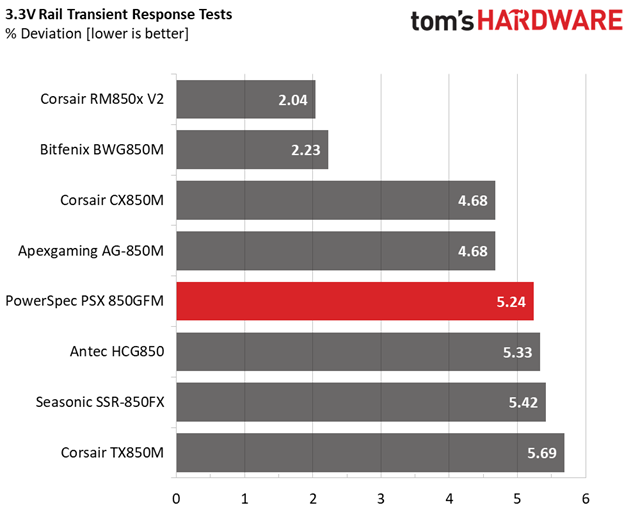

This PSU's transient response is not one of its strengths. High Power's engineers focused more on efficiency, so they sacrificed a bit of performance when it came to transient response. We don't agree that this was a worthwhile compromise: in the real world, PSUs constantly have to deal with transient loads.
Get Tom's Hardware's best news and in-depth reviews, straight to your inbox.
Here are the oscilloscope screenshots we took during Advanced Transient Response Testing:
Transient Response At 20 Percent Load – 200ms


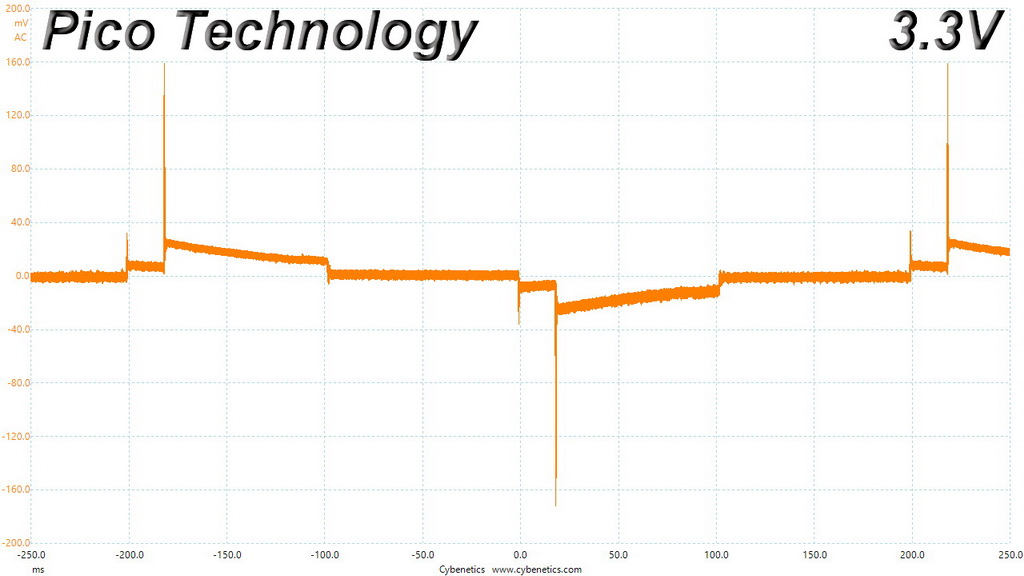

Transient Response At 20 Percent Load – 20ms




Transient Response At 20 Percent Load – 1ms

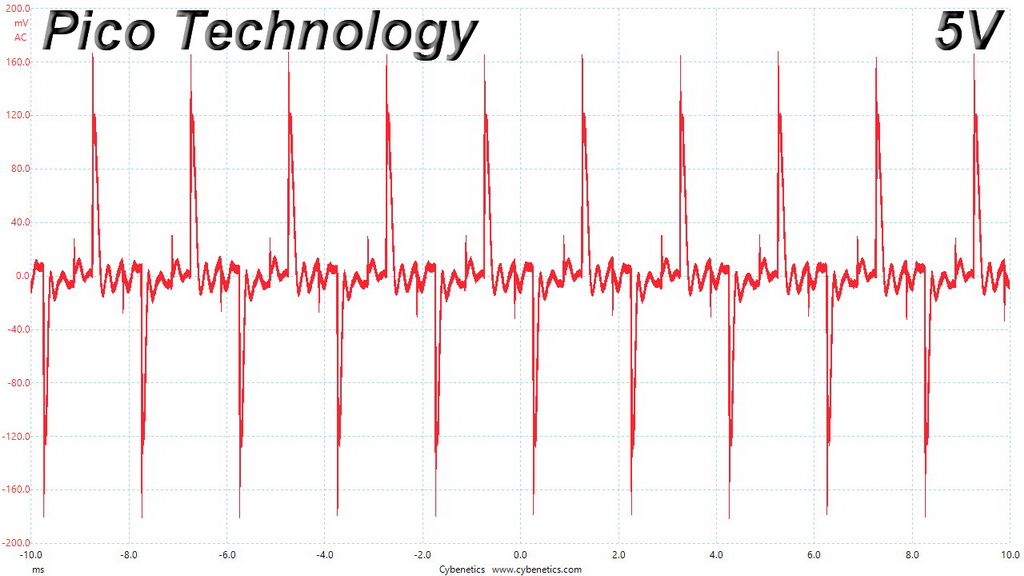


Transient Response At 50 Percent Load – 200ms
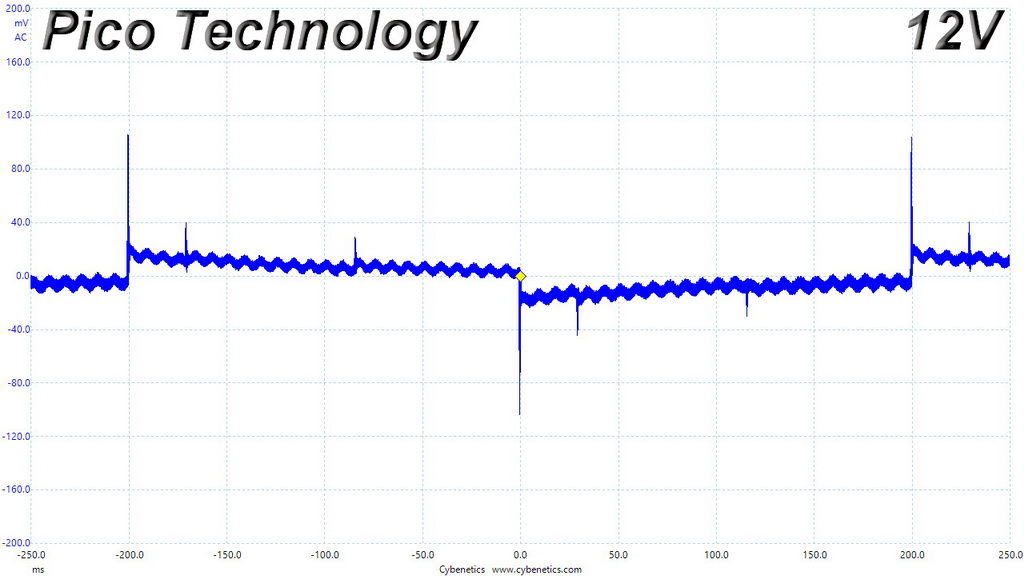



Transient Response At 50 Percent Load – 20ms



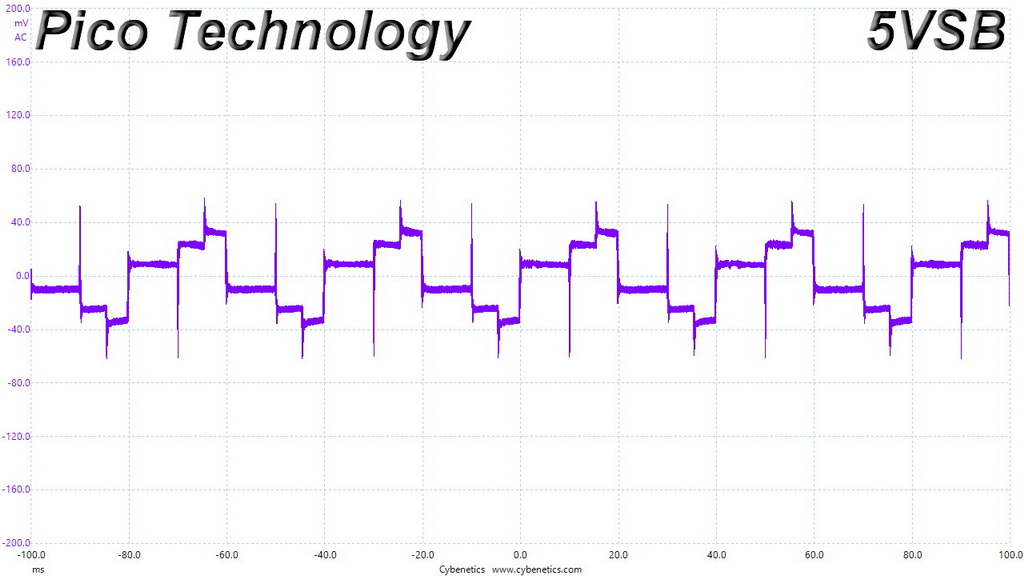
Transient Response At 50 Percent Load – 1ms

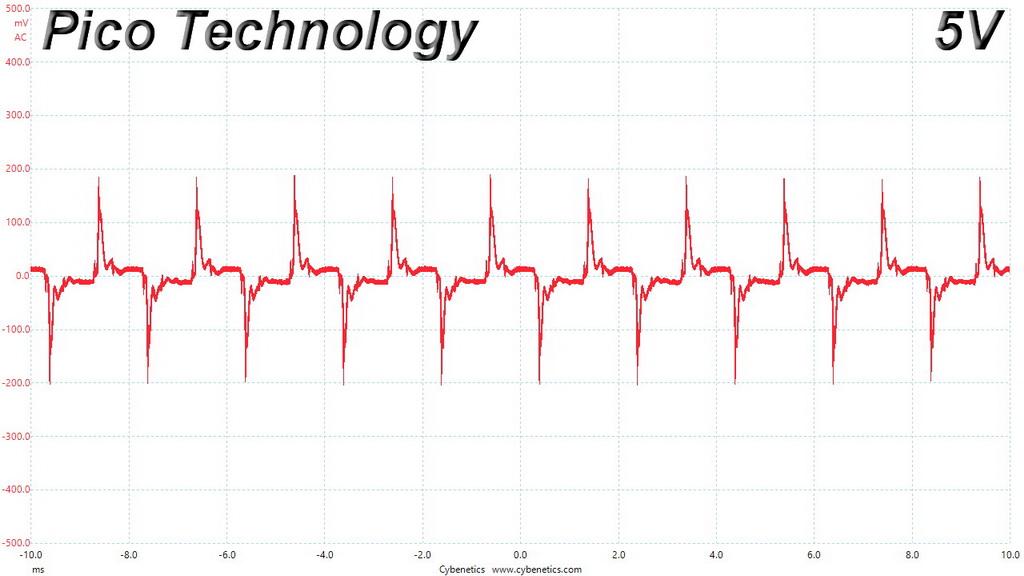


Turn-On Transient Tests
In the next set of tests, we record the PSX 850GFM’s response in simpler transient load scenarios—during its power-on phase.
For our first measurement, we turn the PSX 850GFM off, dial in the maximum current the 5VSB rail can handle, and switch the PSU back on. In the second test, we dial the maximum load the +12V rail can handle and start the PSU while it is in standby mode. In the last test, while the PSU is completely switched off (we cut off the power or switch the PSU off through its power switch), we dial the maximum load the +12V rail can handle before restoring power. The ATX specification states that recorded spikes on all rails should not exceed 10 percent of their nominal values (+10 percent for 12V is 13.2V, and 5.5 V for 5V).



There was a small voltage overshoot at 5VSB, while the 12V slopes were almost perfect.
MORE: Best Power Supplies
MORE: How We Test Power Supplies
MORE: All Power Supply Content
Current page: Transient Response Tests
Prev Page Cross-Load Tests & Infrared Images Next Page Ripple Measurements
Aris Mpitziopoulos is a contributing editor at Tom's Hardware, covering PSUs.
-
AnimeMania In the video, you should have turned on the PSU and shown all the RGB lighting choices.Reply -
pureblackfire2 I wouldn't consider this even if it's cheap. for non enthusiasts it's far from idiot proof enough to recommend. for power users they'd obviously want something better. meh.Reply -
Rexper Low quality sleeve bearing fan without Over Temperature Protection or Fan Failure Protection? No thanks.Reply